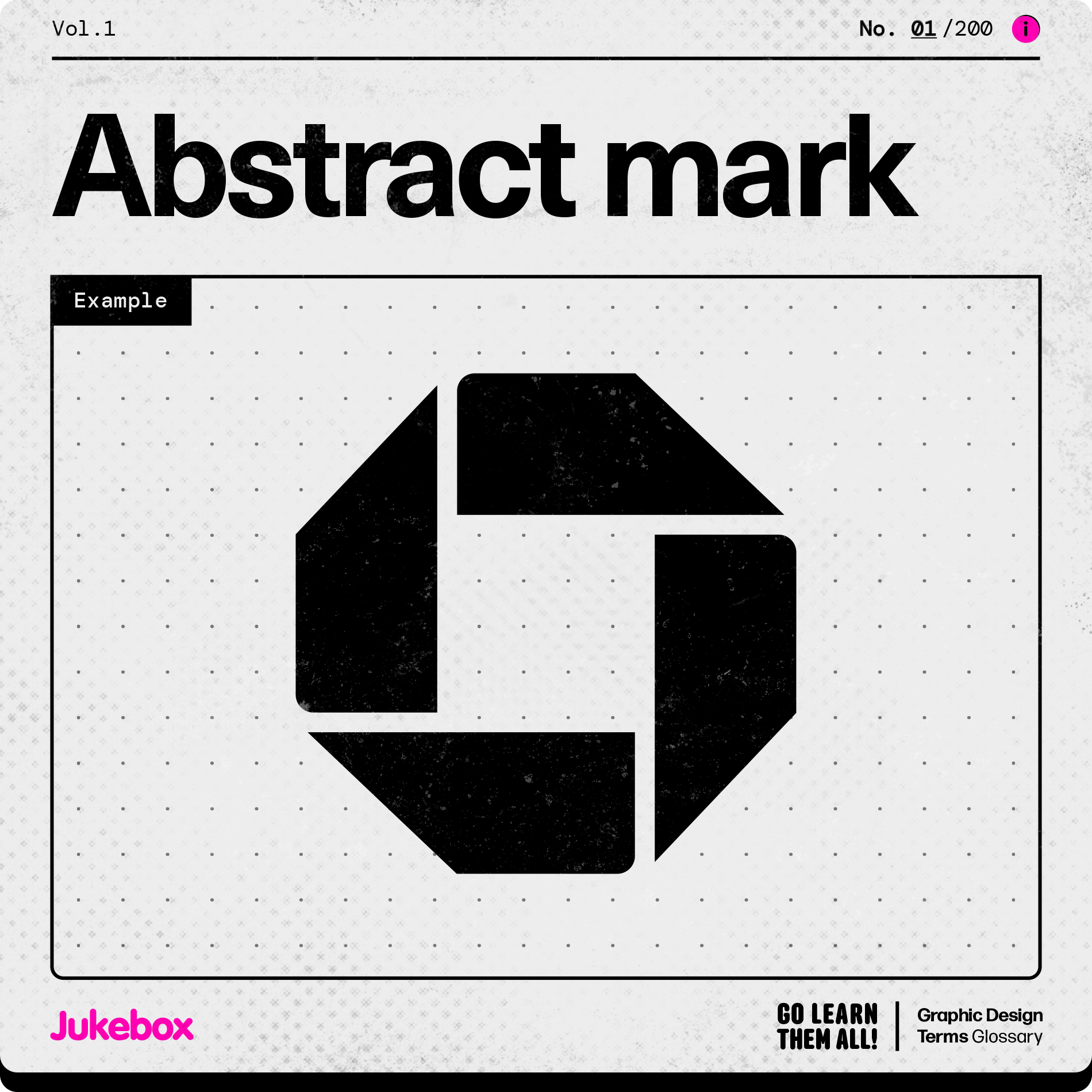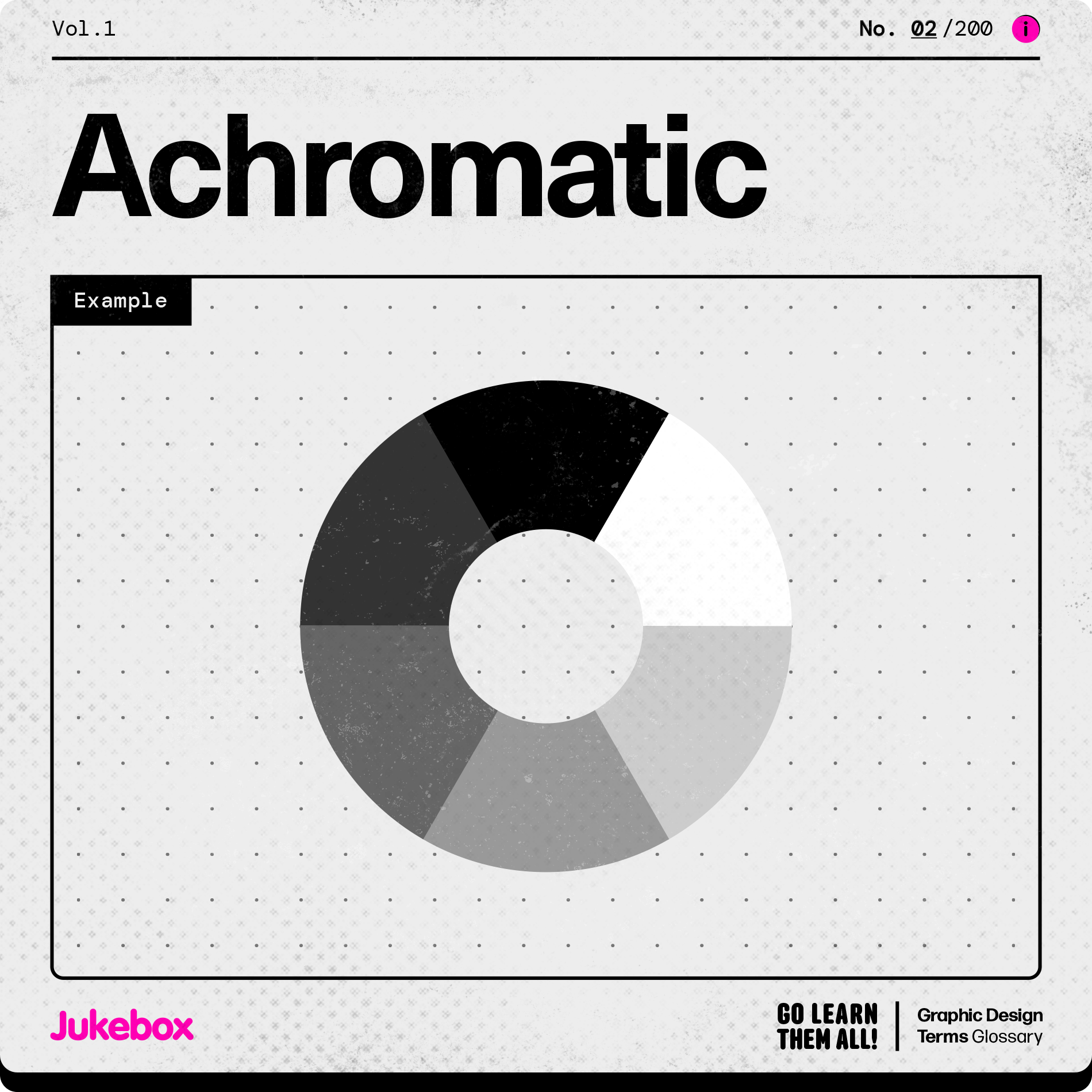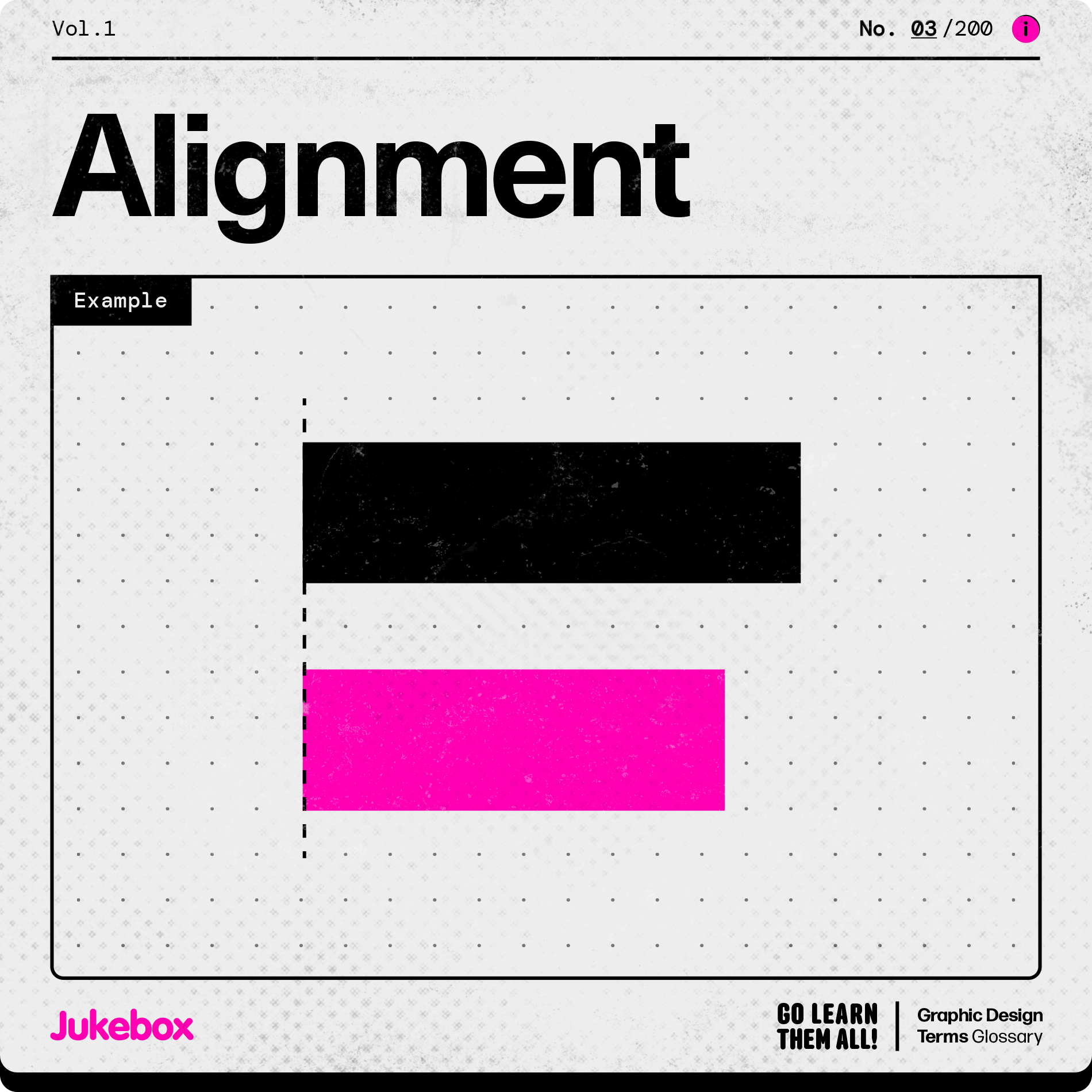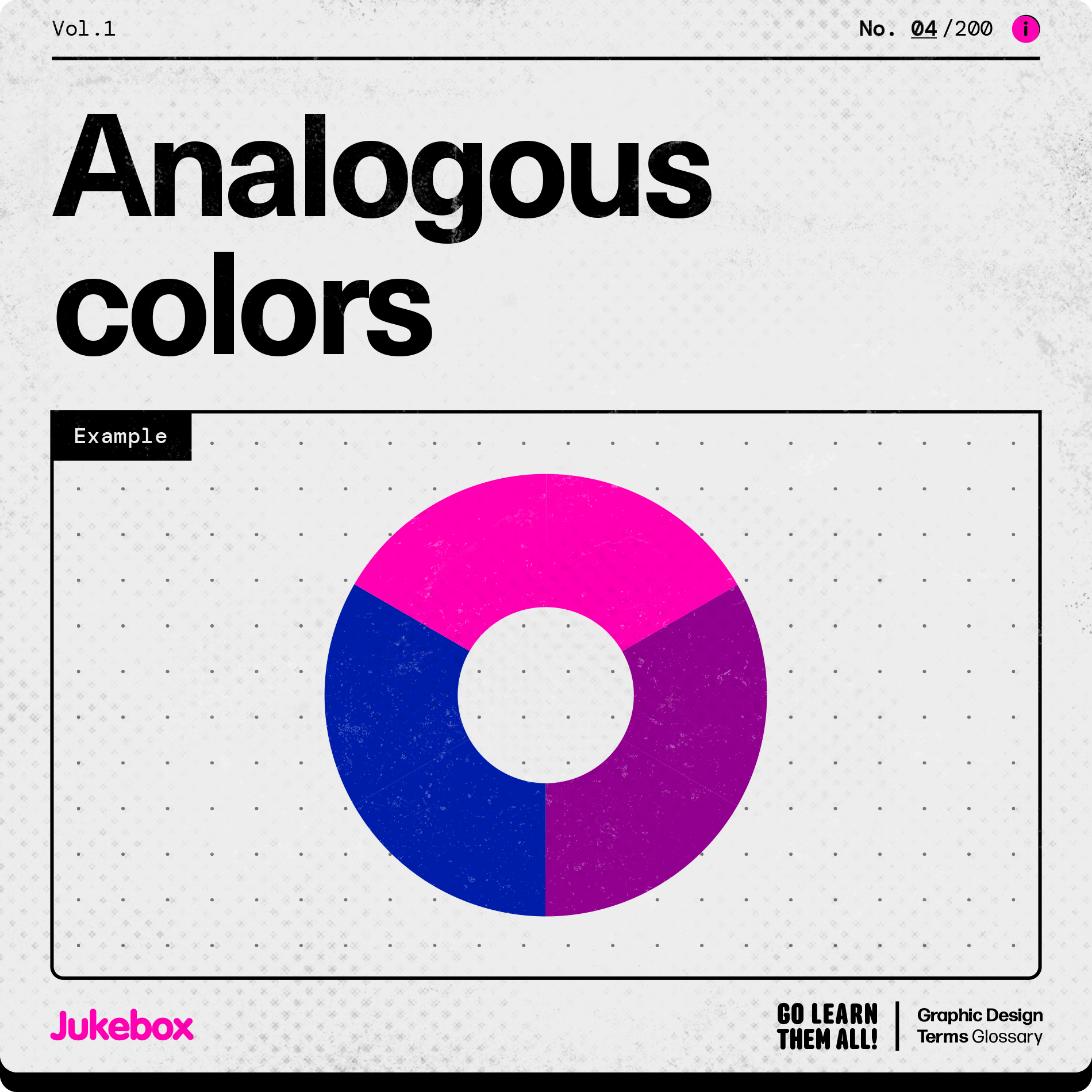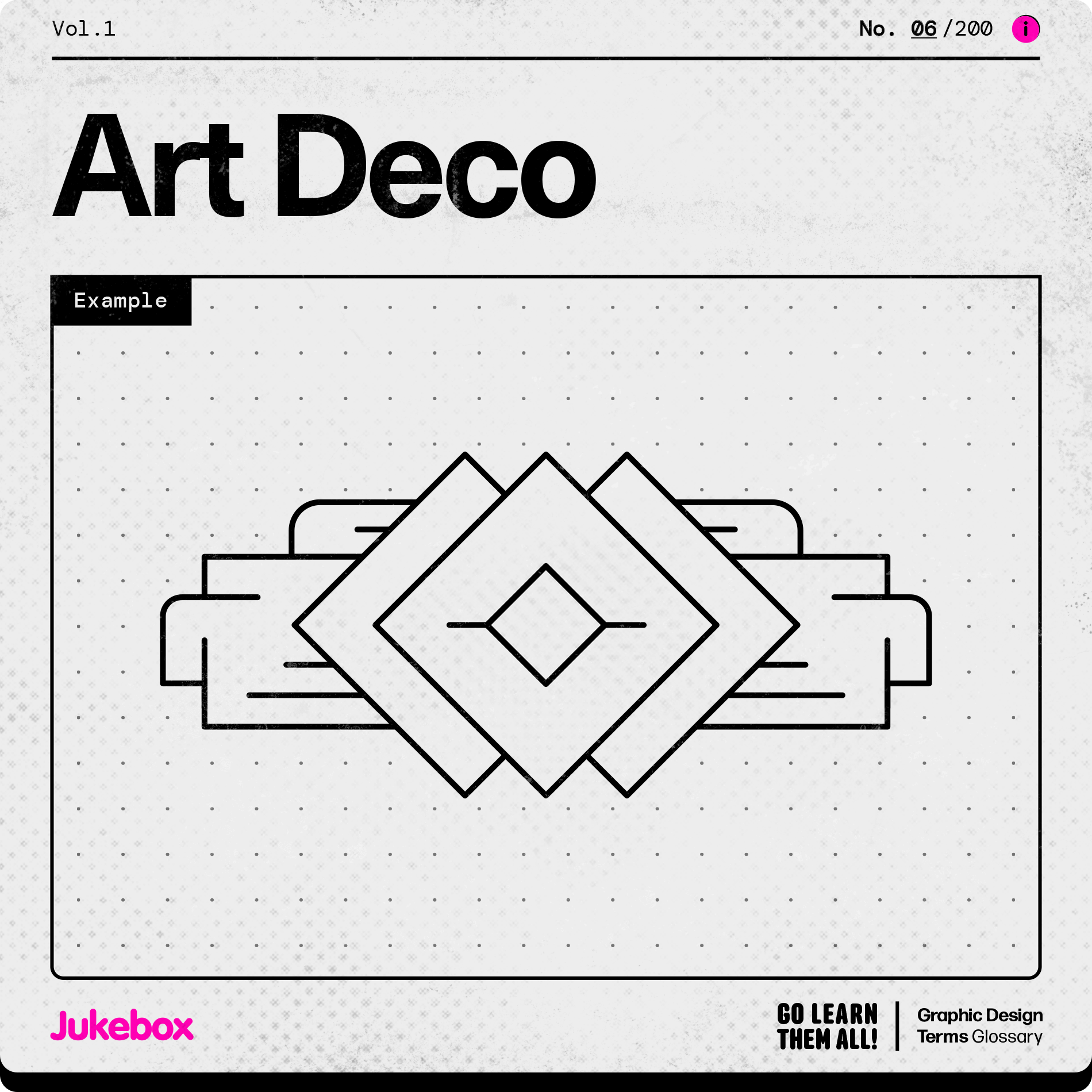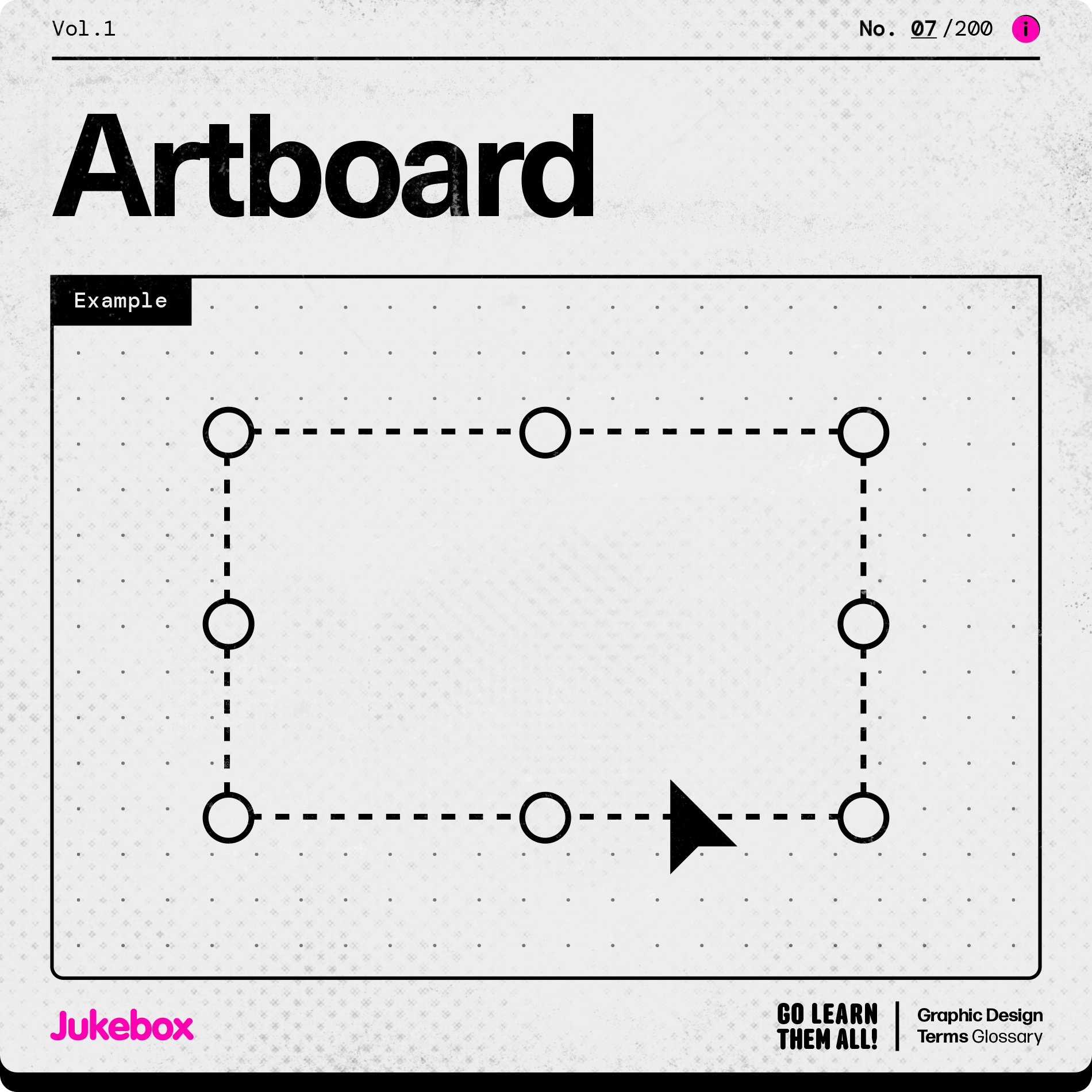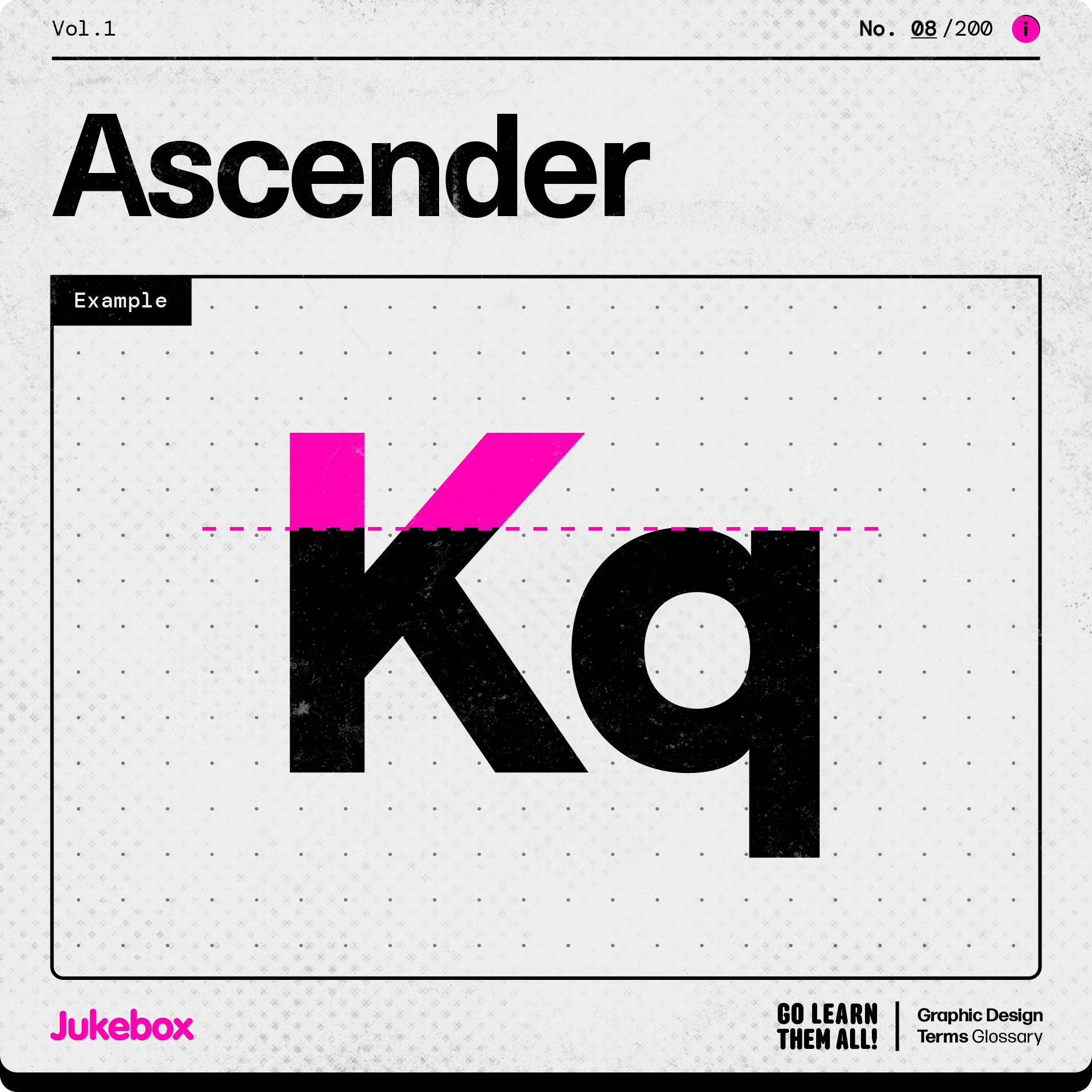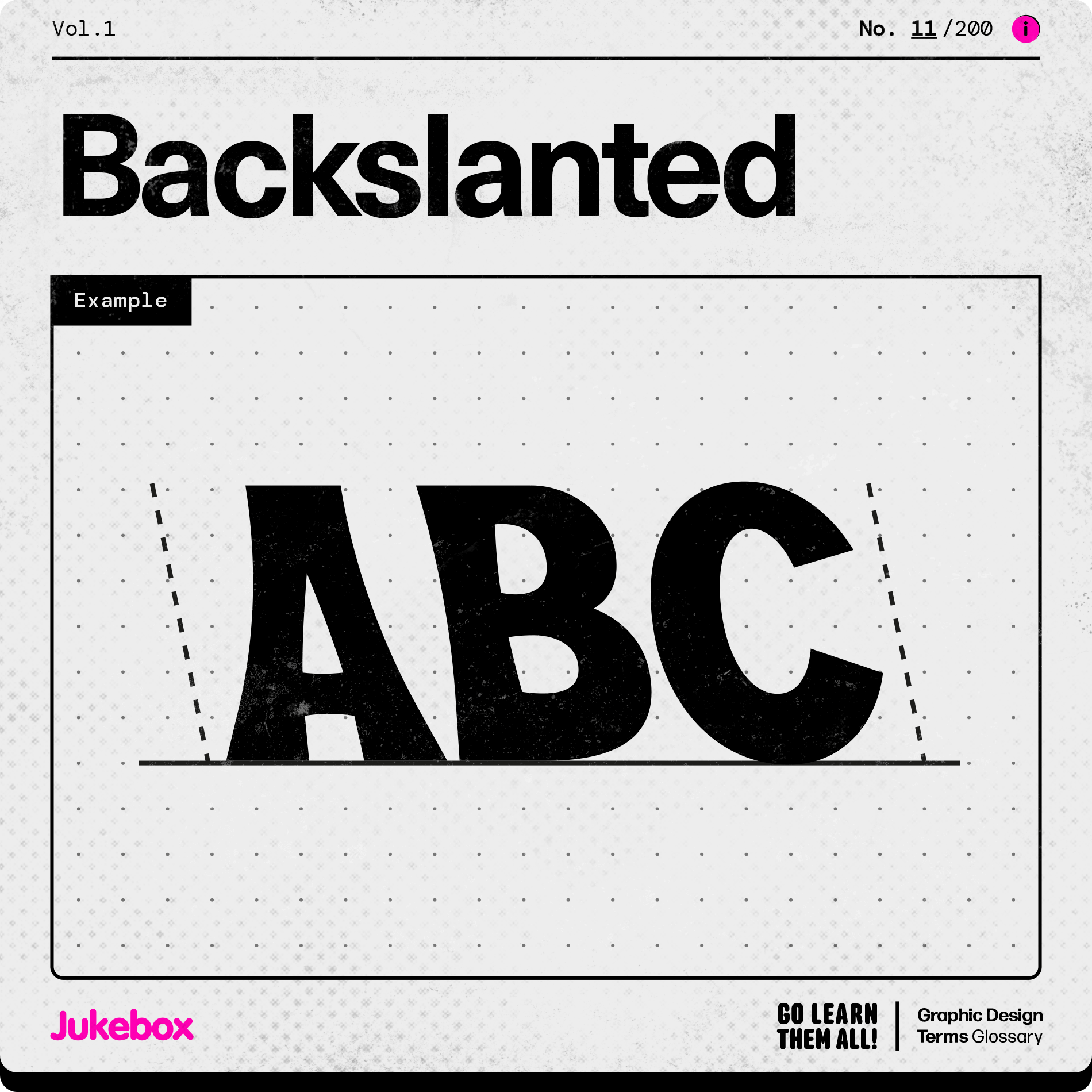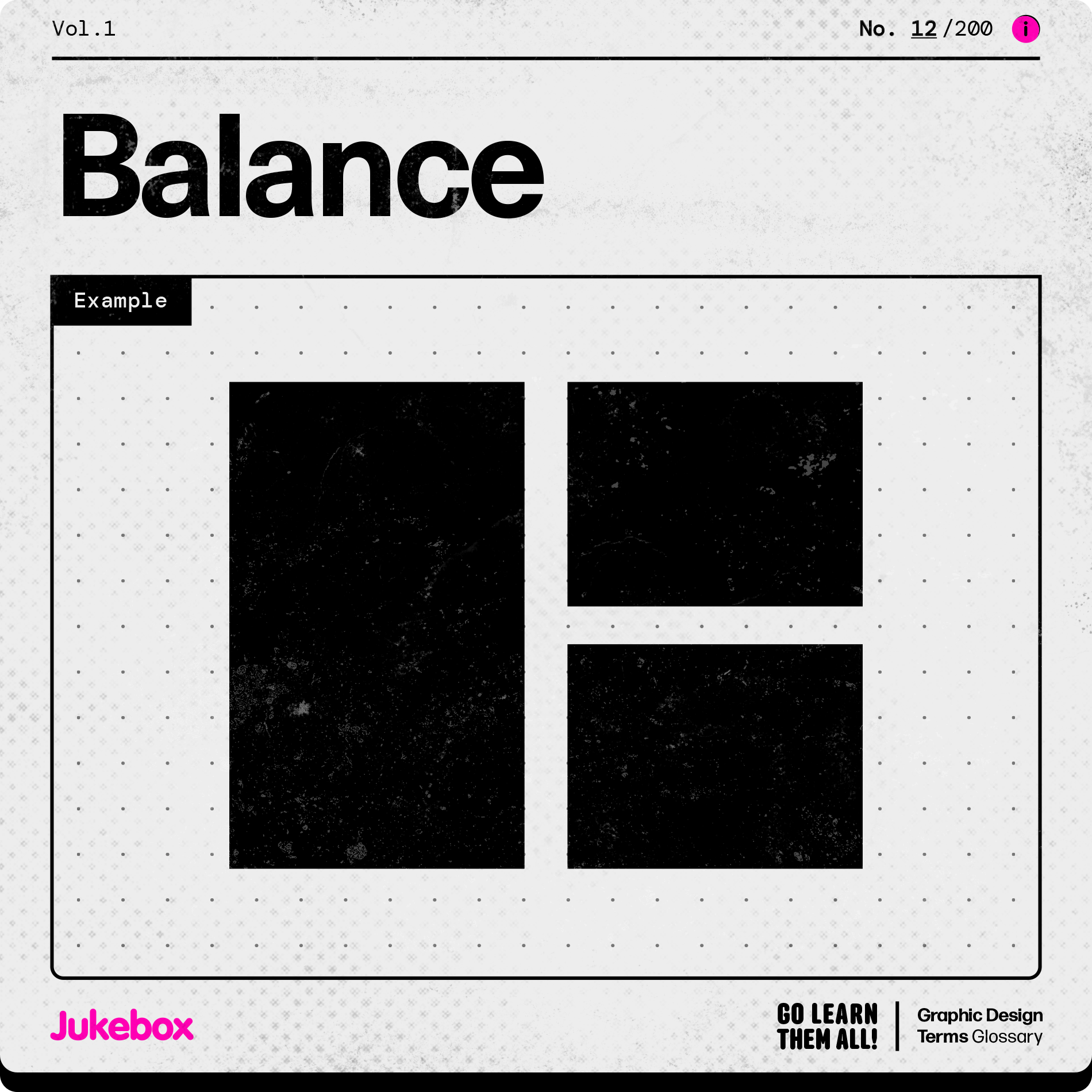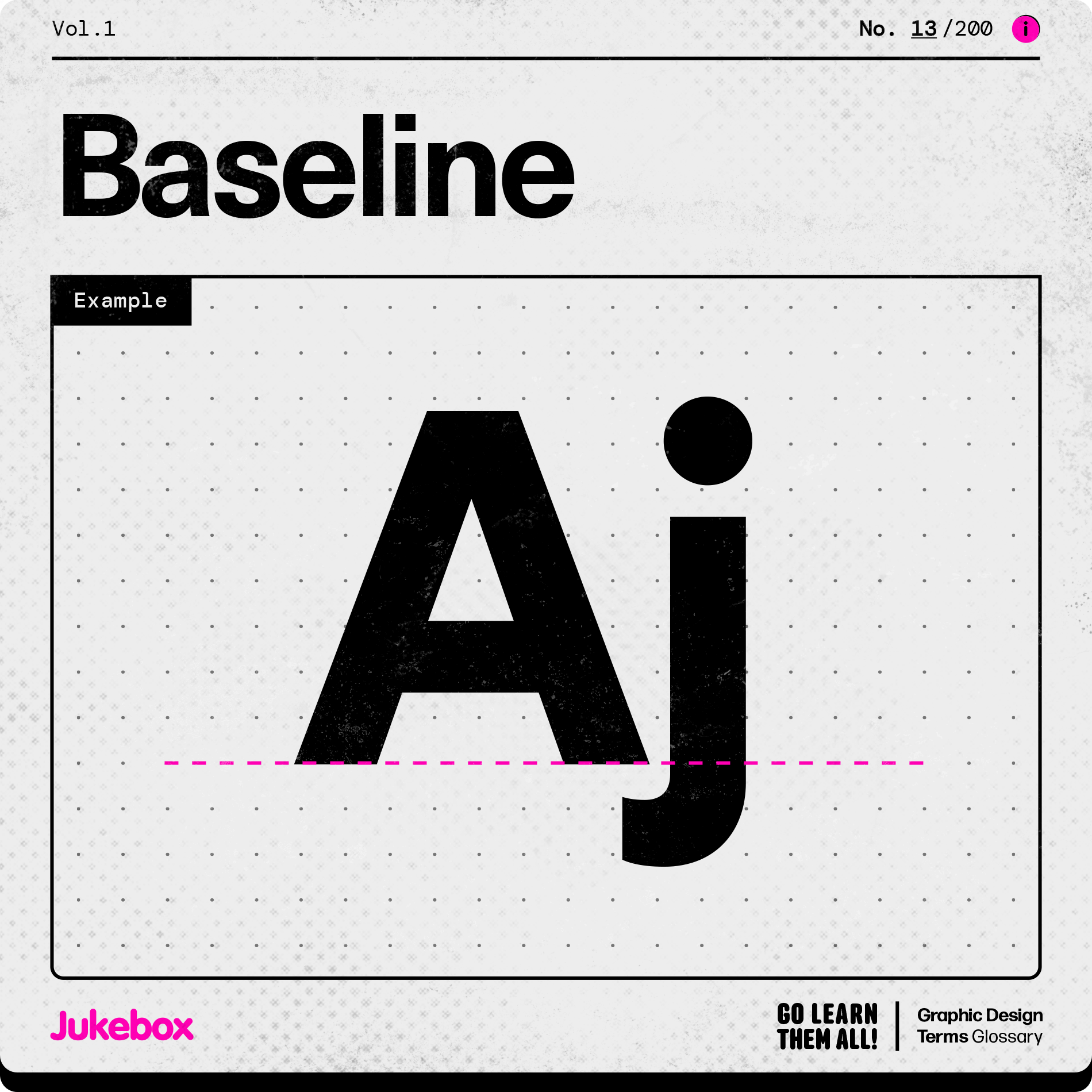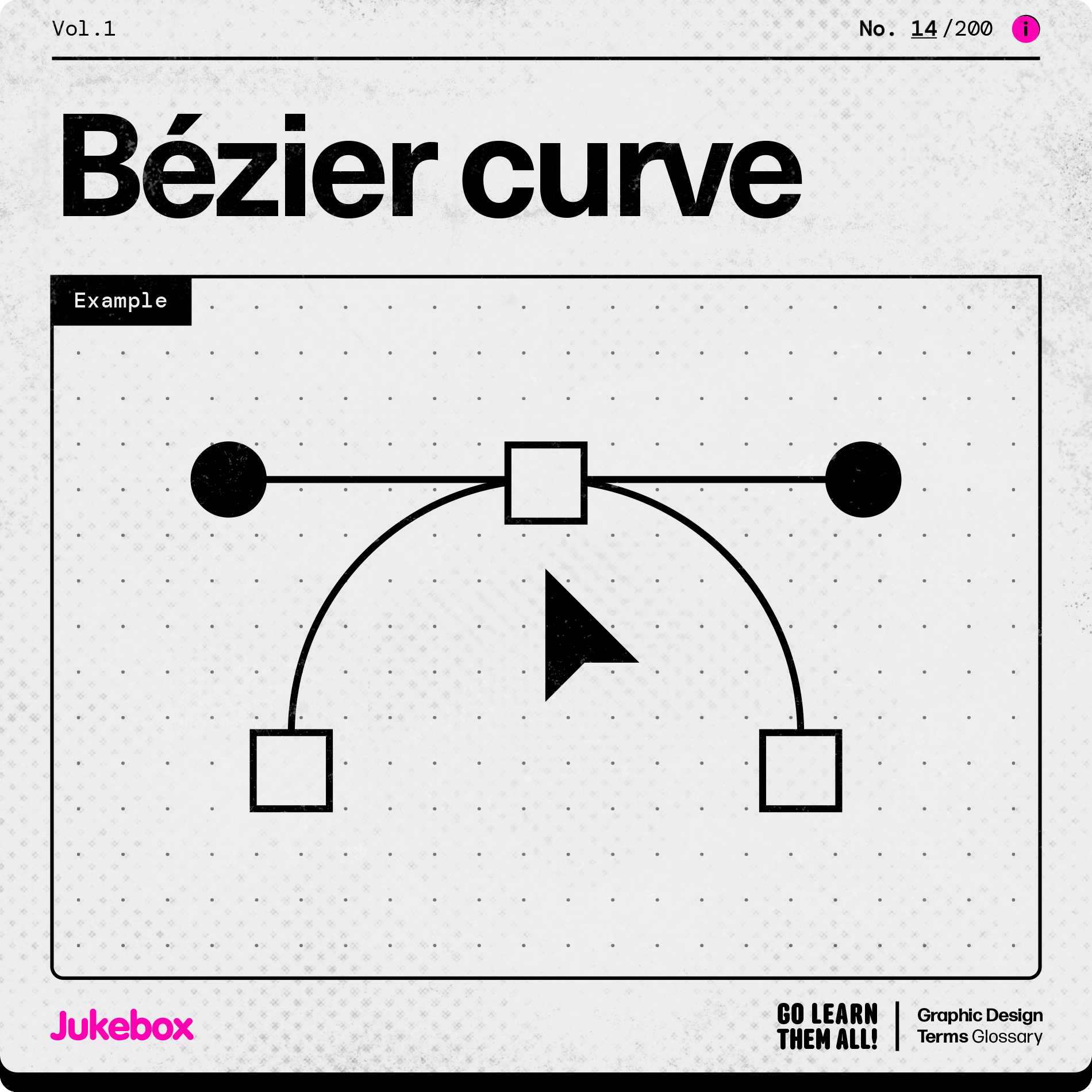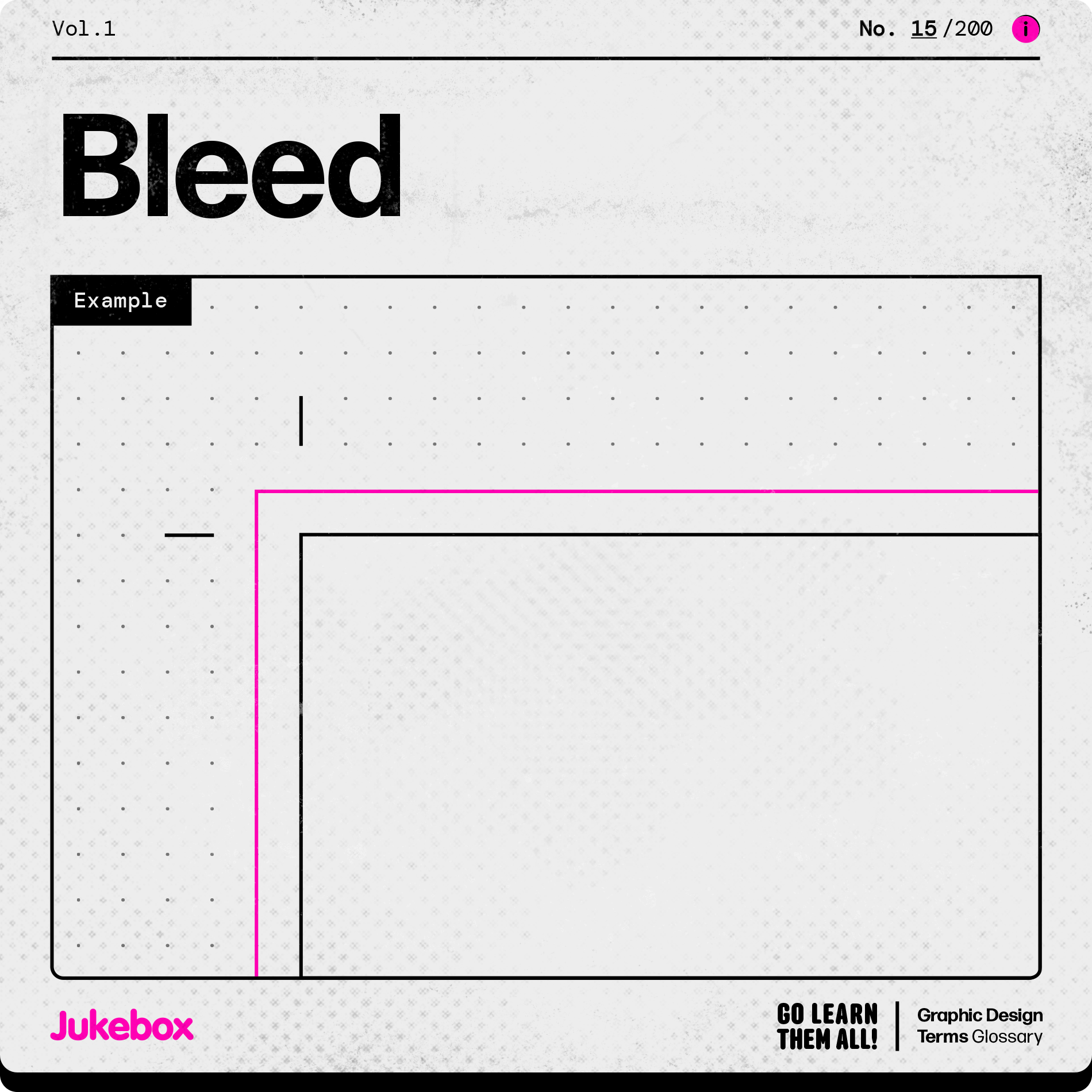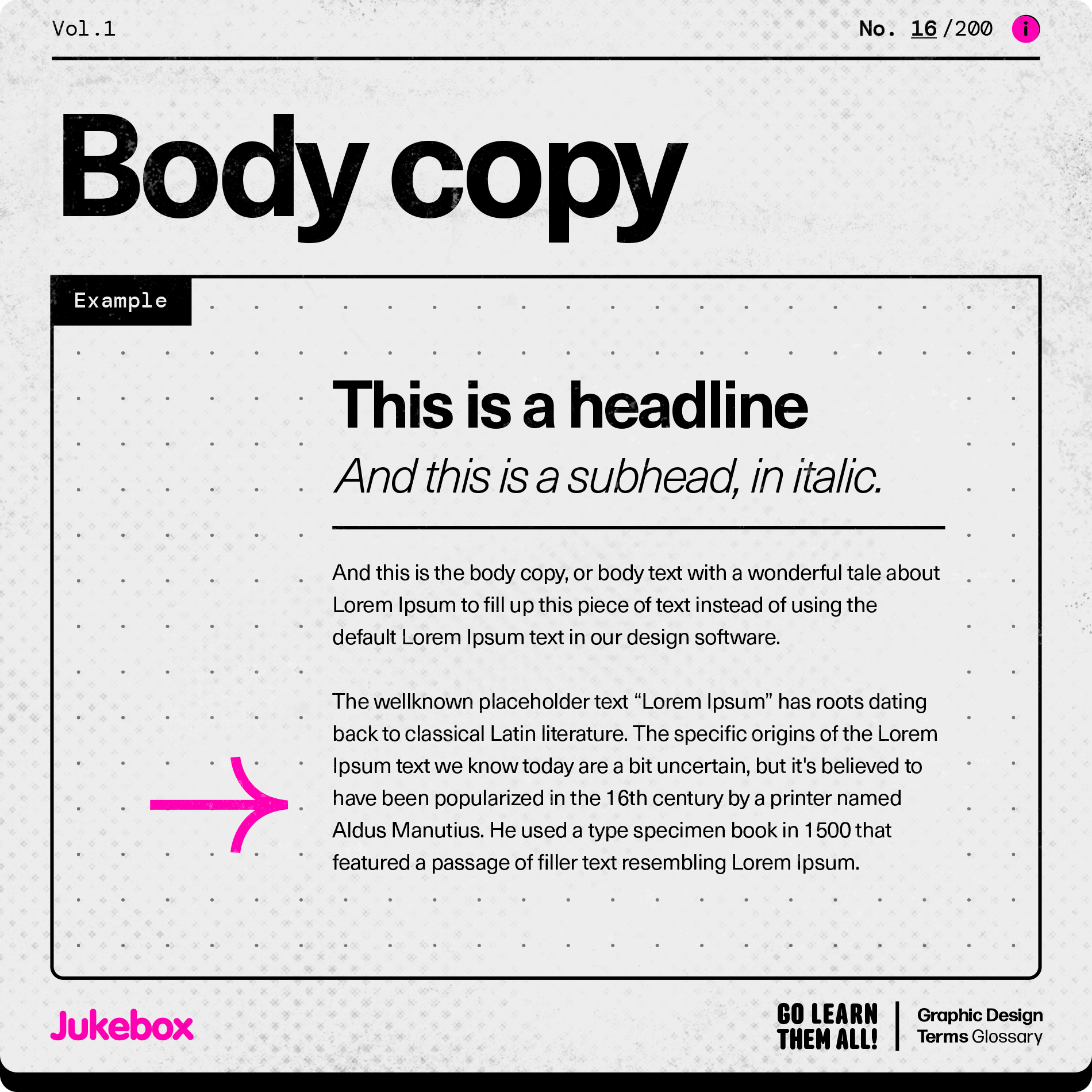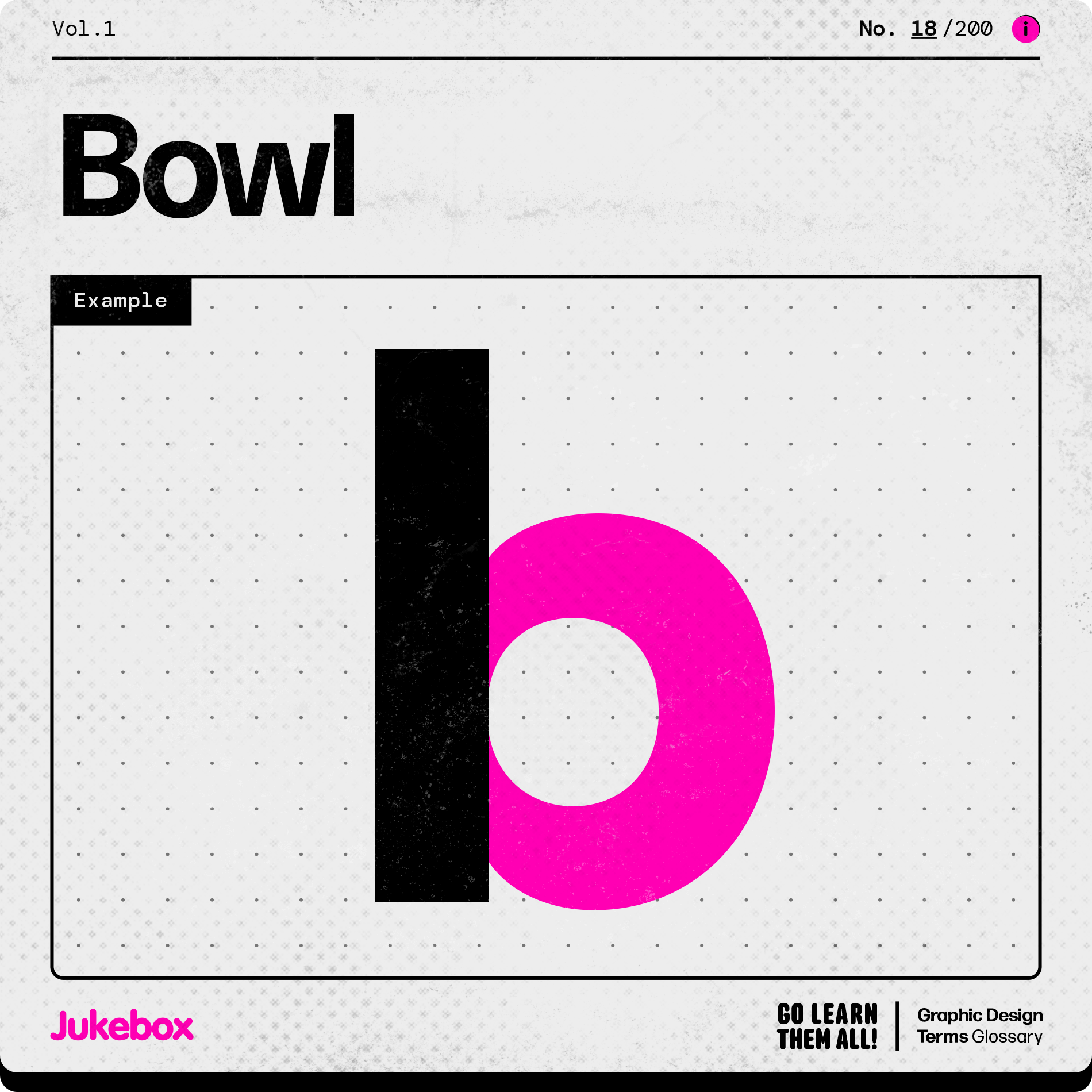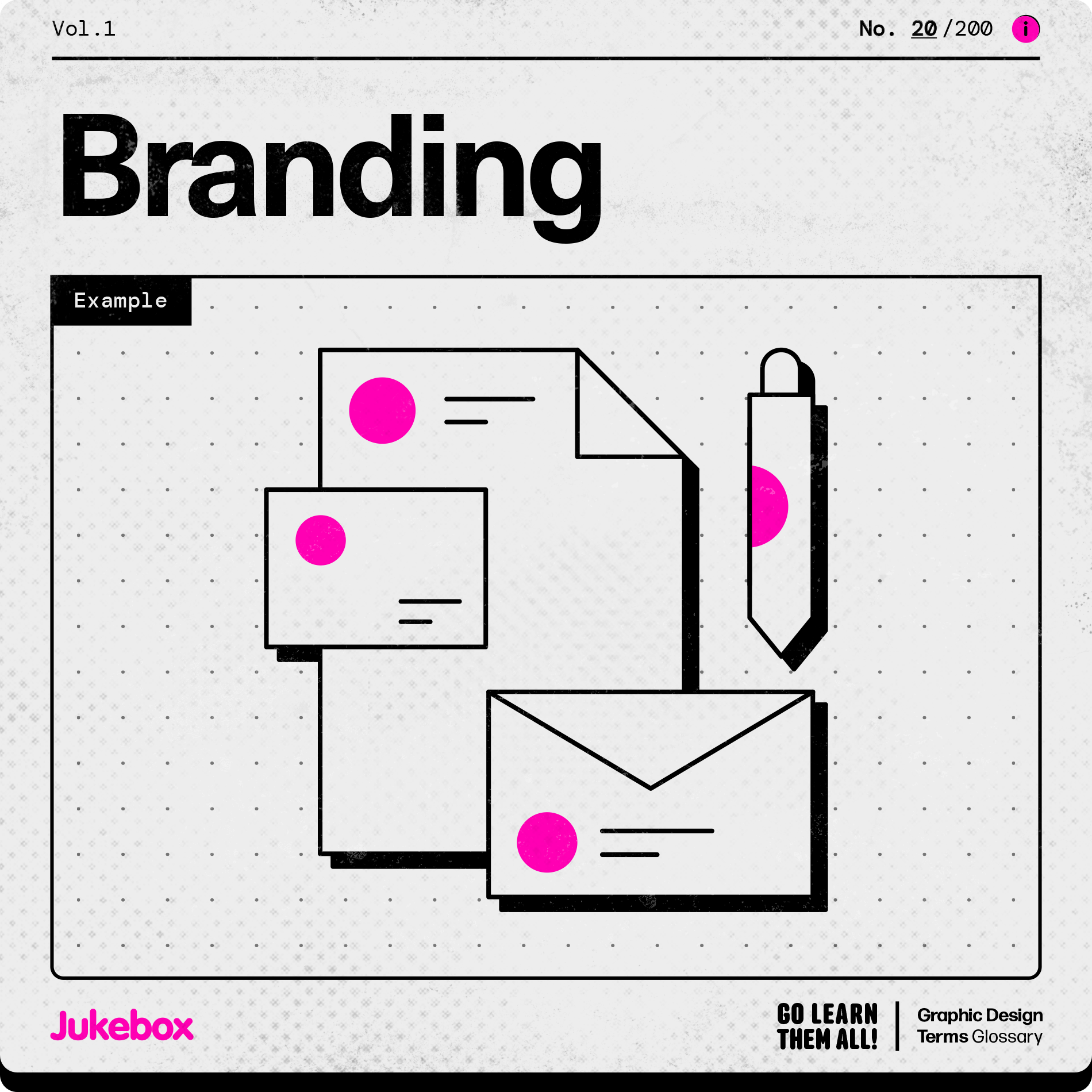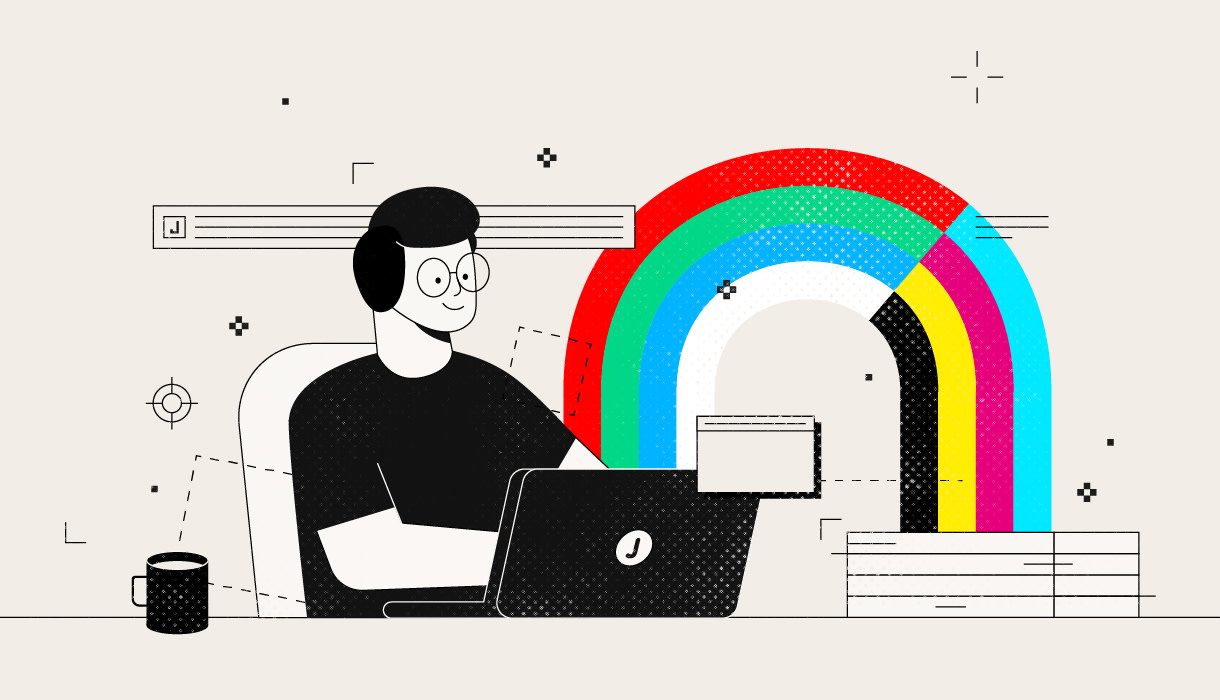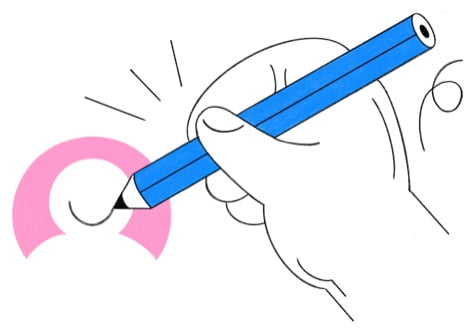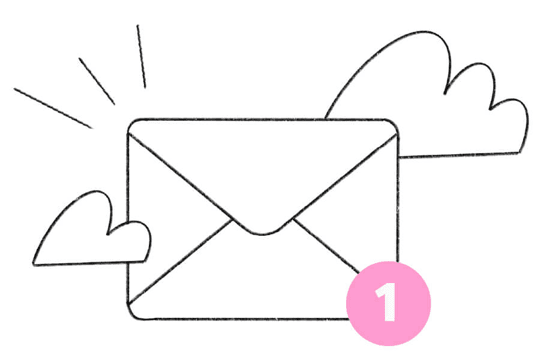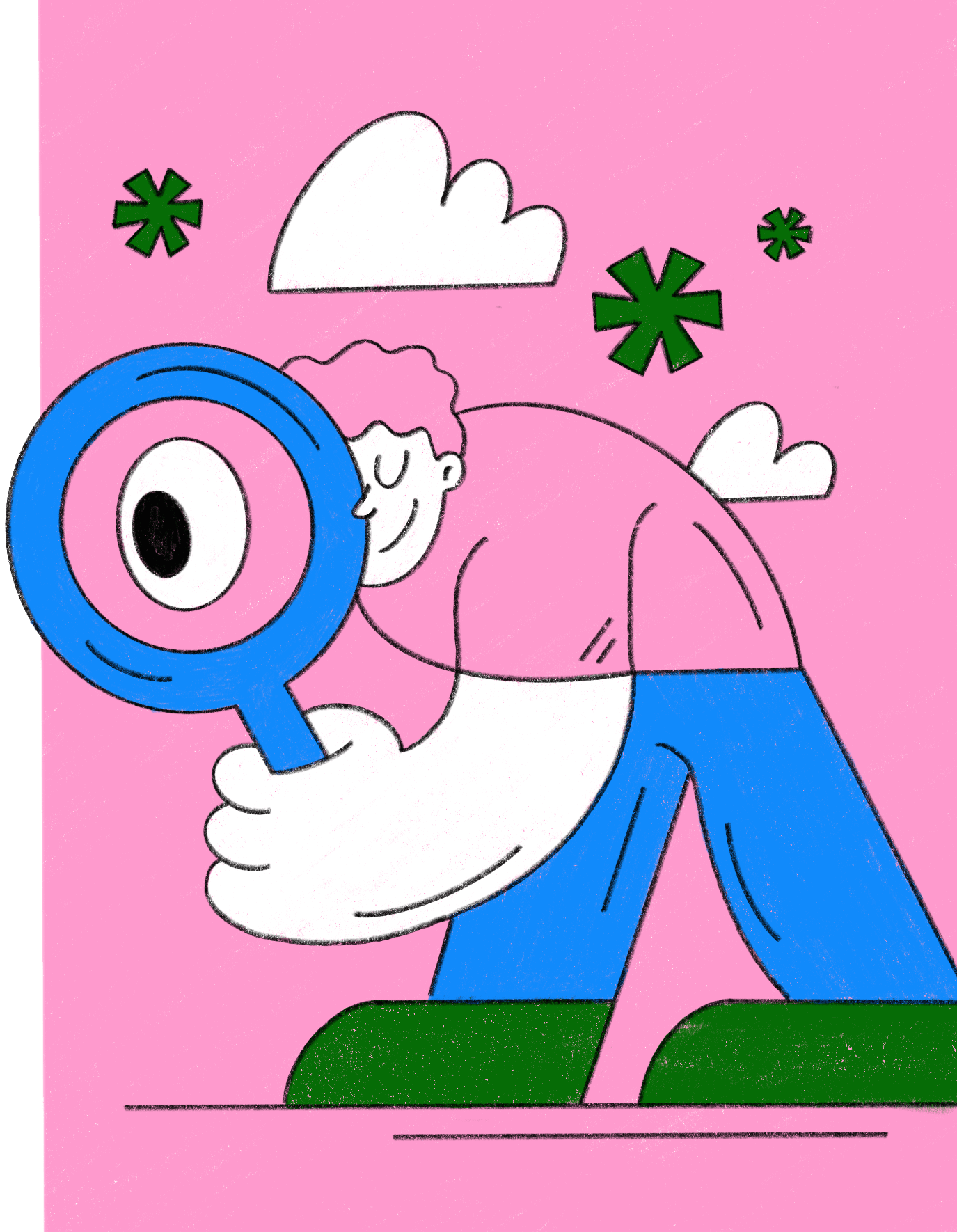It can be quite overwhelming to navigate through the many technical terms and jargon that are commonly used in the field of graphic design. However, understanding these terms is essential for effective communication with clients, colleagues, and other designers.
During this series, we’ll go through a comprehensive list of 200 graphic design terms that every graphic designer should know about in alphabetical order. Whether you are a seasoned designer looking to refresh your knowledge or a complete newcomer to the field, this series will provide you with a solid foundation of essential terms that will help you communicate and create more effectively. And of course, being able to brag about all that graphic design trivia you got up your sleeve!
So get yourself some coffee or tea, save all the documents you’re currently working on, sit back and enjoy this first volume of graphic design terms.
Glossary of graphic design terms
1. Abstract mark
A stylized or abstract representation of the brand. Highly effective in creating a unique and memorable image.
2. Achromatic
A color scheme that consists of only black, white, and grays.
3. Alignment
The arrangement of elements in a design to create balance and order.
4. Analogous colors
Colors that are adjacent to each other on the color wheel.
5. Animation
The process of creating the movement or motion in a design or image.
To succeed in the field of graphic design, designers must be fluent in the technical language of their craft. A comprehensive understanding of graphic design vocabulary is essential for effective communication with clients, colleagues, and other designers. A glossary of graphic design terms provides designers with a convenient reference to quickly and easily access definitions and explanations of the essential terminology used in the industry.
6. Art Deco
A design style that originated in the 1920s that is characterized by geometric shapes, metallic finishes, and bold typography.
7. Artboard
The virtual canvas on which a designer creates a design.
8. Ascender
The part of a lowercase letter that extends above the x-height.
9. Aspect ratio
The proportional relationship between the width and height of a design or image.
10. Asymmetrical balance
A type of balance where the weight of design elements is not evenly distributed but still achieves a sense of balance.
A comprehensive glossary of graphic design terms and definitions is an essential resource for designers at all levels of experience. By mastering the essential terms and concepts used in the industry, designers can create more effective and impactful designs. Understanding graphic design terminology enables designers to communicate more effectively with clients and colleagues and to build a stronger foundation of knowledge and expertise.
11. Backslanted
Characters that are slanted to the left, often for decorational purposes.
12. Balance
The distribution of visual weight in a design.
13. Baseline
An imaginary line upon which the letters in a line of text sit.
14. Bézier curve
A mathematical curve used to create the smooth, flowing lines of a typeface.
15. Bleed
The area outside the finished design that will be trimmed off after printing.
Graphic design has its unique jargon and terminology, which can be overwhelming for newcomers. A glossary of graphic design terms is an invaluable resource for navigating this jargon and mastering the language of graphic design. By understanding graphic design terminology, designers can confidently communicate with clients and colleagues, build credibility, and produce better designs.
16. Body copy
The main text in a design.
17. Bold
A typeface with thick and dark strokes that make the letters more prominent.
18. Bowl
The rounded part of a letter that encloses a circular or curved space, such as in the letter “d” or “p”.
19. Bracket
A curved or angled support that connects the serif or stem of a letter to its curve, such as in the letter “G”.
20. Branding
The process of creating and promoting a brand or product.
The benefits of understanding graphic design terminology go beyond effective communication and design mastery. By building a strong foundation of knowledge and technical vocabulary, designers can gain greater confidence in their work and elevate their careers. A comprehensive glossary of graphic design terms provides designers with a convenient and accessible resource to help them achieve these goals.
That’s it for now!
We hope that these graphic design terms have provided you with a deeper understanding of some of the essential terminology used in the field of graphic design. Remember, learning these terms is just the first step toward becoming a successful graphic designer.
To truly excel, you must continuously refine your skills and stay up-to-date with the latest trends and technologies in the industry. So, keep exploring, experimenting, and learning, and don't be afraid to ask questions and seek feedback from others in the field.
With dedication and hard work, you can become a master of your craft and create stunning projects that make a lasting impact. Having a glossary of graphic design terms up your sleeve will be beneficial for yourself and anyone you cross paths with during your career. Stay tuned for the upcoming volumes to keep on growing your graphic design terminology knowledge.
Make sure to have a look at the biggest graphic design trends for 2023 to get yourself ahead of the curve and know what’s trending in the industry.
When you’re not a professional designer yourself and don’t have the budget to commission a designer or illustrator yourself, the Jukebox Editor is the perfect match for you. With this online tool, you’re able to design and order your business cards, greeting cards, custom stickers, wrapping paper, wedding invitations and so much more.
Find more design inspiration on the Jukebox blog.



